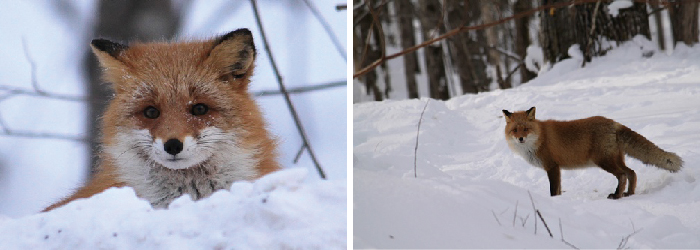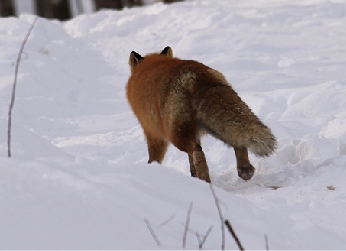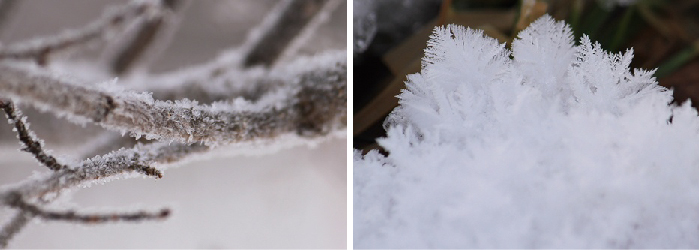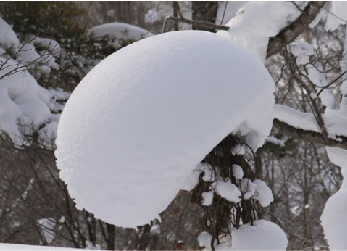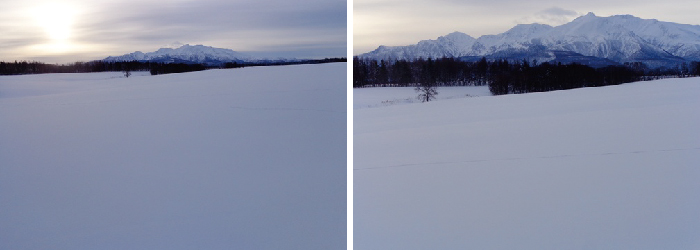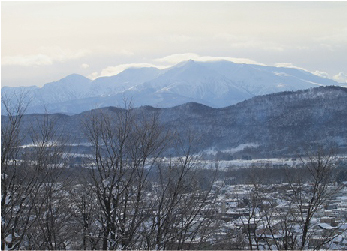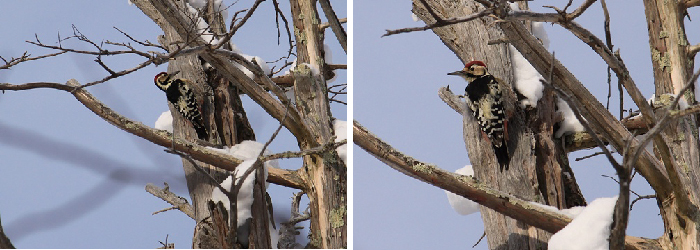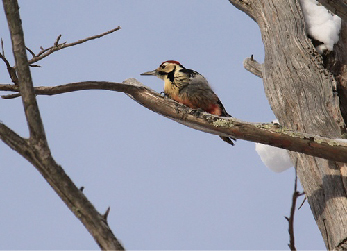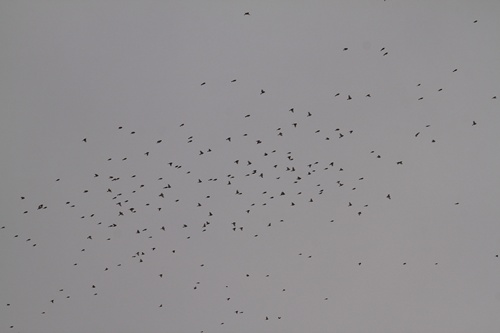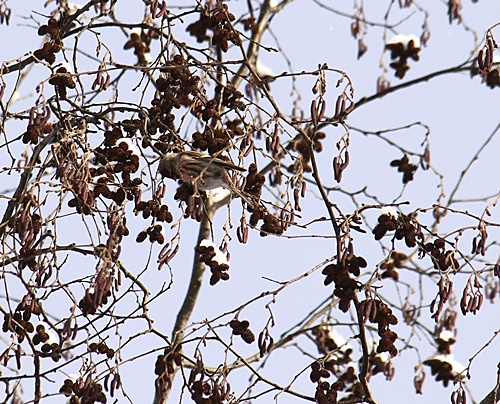During a walk on snowshoes, I was suddenly overcome by a sense of danger.
I stopped and quickly looked to the side. And there I saw what you can see in the photos. On this cold day, the fox was apparently napping in the snow.
It immediately jumped up and disappeared into the forest, its fluffy tail trailing behind.
However, at the base of this tail is an anal gland that produces a terrible stink.
There is also another kind of “fox stink”: the smell of fox urine.
In addition to urine, foxes have a “violet gland” at the tail that, as the name suggests, produces a smell similar to violets. They also have “scent glands” between the pads of their paws that produces a slightly sweet smell as well as other glands. Thus, though cute to look at, the Vulpes vulpes schrencki produces a variety of smells.
Photos: Vulpes vulpes schrencki Jan 18
I stopped and quickly looked to the side. And there I saw what you can see in the photos. On this cold day, the fox was apparently napping in the snow.
It immediately jumped up and disappeared into the forest, its fluffy tail trailing behind.
However, at the base of this tail is an anal gland that produces a terrible stink.
There is also another kind of “fox stink”: the smell of fox urine.
In addition to urine, foxes have a “violet gland” at the tail that, as the name suggests, produces a smell similar to violets. They also have “scent glands” between the pads of their paws that produces a slightly sweet smell as well as other glands. Thus, though cute to look at, the Vulpes vulpes schrencki produces a variety of smells.
Photos: Vulpes vulpes schrencki Jan 18
